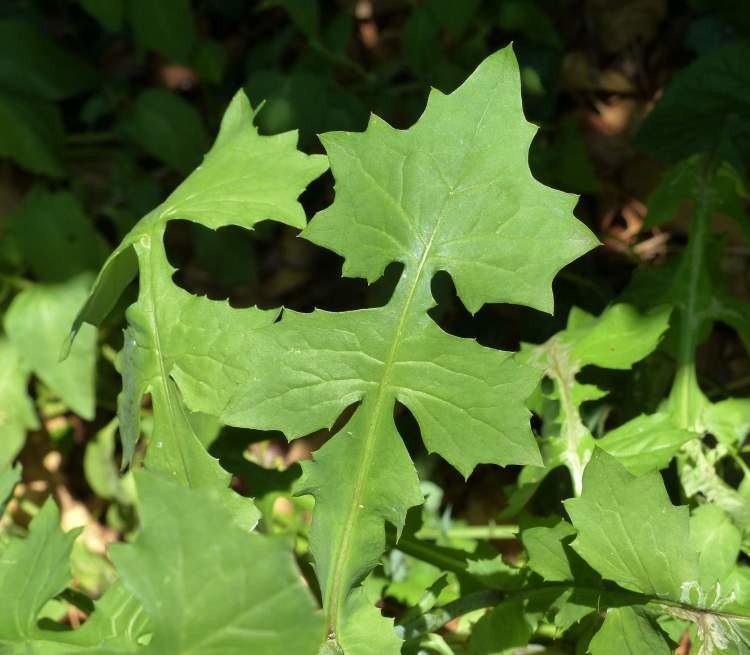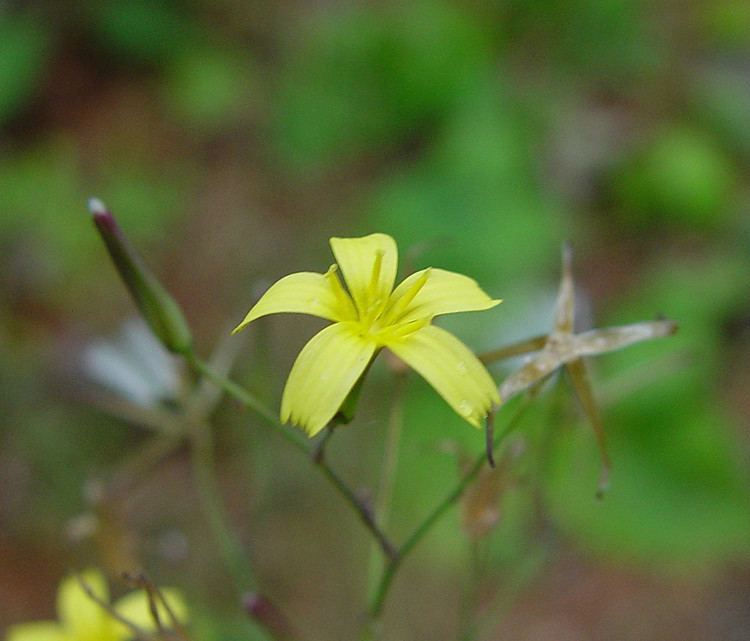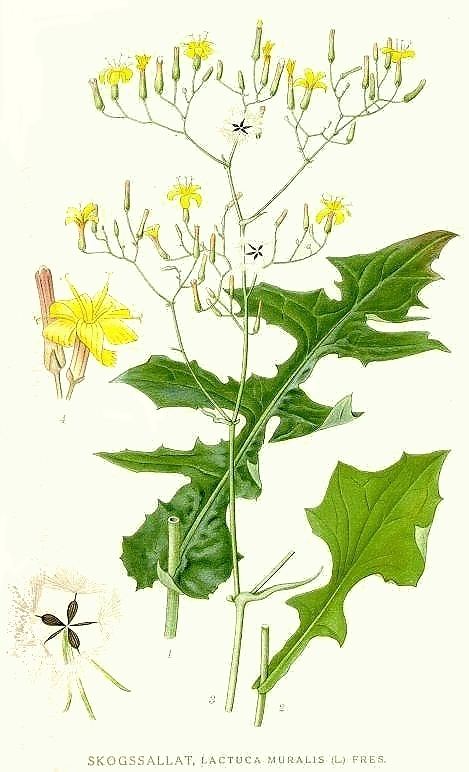Rank Species | Genus Lactuca Higher classification Lactuca | |
 | ||
Similar Prickly Lettuce, Cat's ear, Pineappleweed, Sow thistles, Field Sow Thistle | ||
Lactuca muralis
Lactuca muralis (wall lettuce), or Mycelis muralis, is a perennial flowering plant of the genus Lactuca in the dandelion tribe within the daisy family.
Contents

Its chief characteristic is an open airy clumps of yellow flowers. Each "flower" is actually a composite flower, consisting of 4-5 petal-like flowers (strap or ray flowers), each approximately 5–7 mm in length. There are no disc flowers. Lactuca muralis grows about 2–4 feet tall with the lower leaves pinnately toothed and clasping.

Description

Lactuca muralis is a herb, it grows from 25 to 150 cm tall, is slender and hairless. It often has purplish stems, and exudes a milky juice.

The lower leaves are lyre shaped, pinnate shaped. The lobes are triangular in shape. The upper leaves are stalkless, smaller and less lobed. All leaves are red tinged.

The achenes are short beaked, spindle shaped and black. The pappus has simple white hairs,the inner longer than the outer.
The flower heads are yellow, small with only 4-5 yellow ray florets. 1 cm wide more or less, on branches 90 degrees to the main stem, in loose panicle. It flowers from June until September.
Distribution and ecology
Lactuca muralis is a native of Europe but has invaded shady roadsides, paths and logged areas of the Pacific Northwest. It has become naturalized in parts of Northern Ireland as long ago as 1913.
It can be found in woodlands, especially Beech. It is also found in calcareous soils, and walls.
